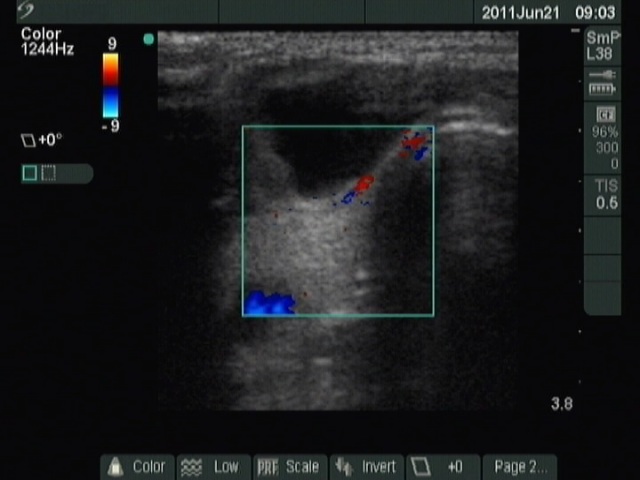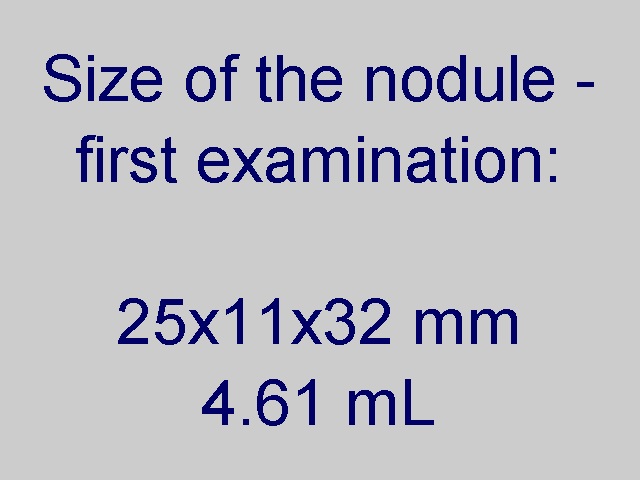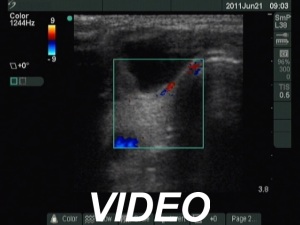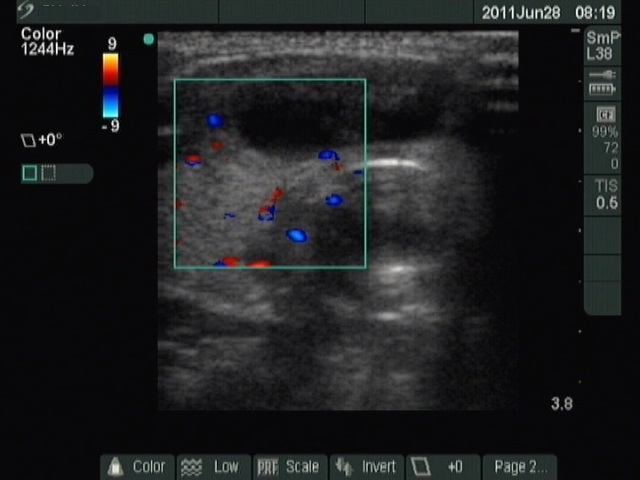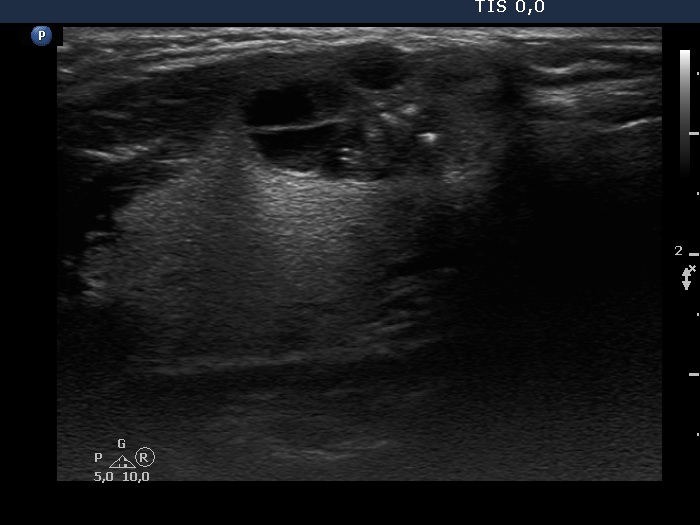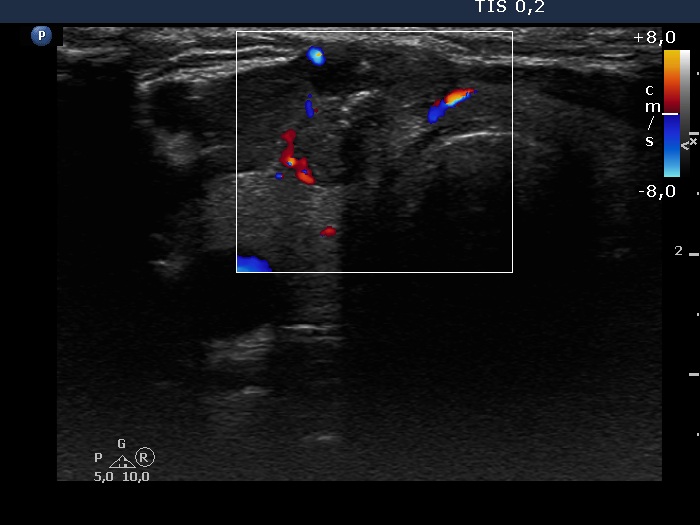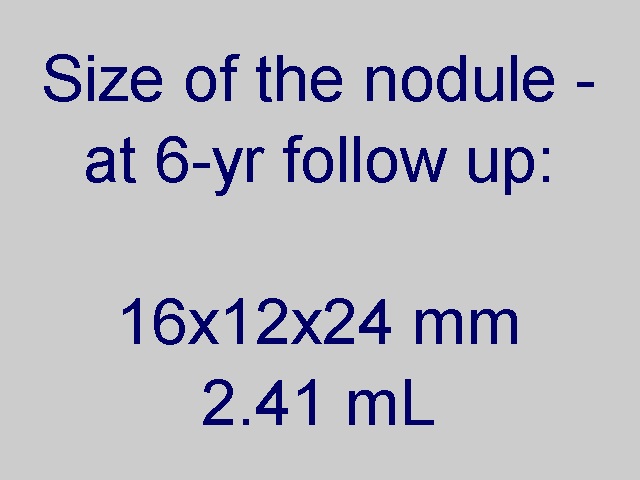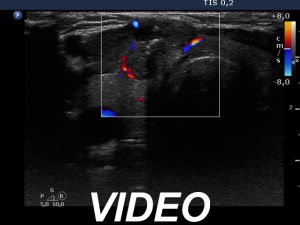Ethanol sclerotherapy: thyroid cysts - Case 8 |
|
First session of sclerotherapy (1st row of images)
Clinical presentation: a 33-year-old woman was returned for evaluation of a thyroid cyst which was drawn off previously two times and refilled again three month after the last visit and caused pressure while stooping and in recumbent position.
Palpation: an elastic nodule in the right side of the isthmus.
Functional state: euthyroidism ( TSH-level 0.73 mIU/L).
Ultrasonography: the thyroid was echonormal. There were several cystic areas in both lobes with less than one cm in maximal diameter. There was a much larger cystic nodule in the isthmic part of the right lobe. The solid part was echonormal and the lesion had halo and perilesional blood flow.
Cytology resulted in benign cystic degeneration.
Sclerotherapy was advised. After removing 3.5 mL brown fluid, 1 ml ethanol was given. The patient felt strong stretching pain which was relieved within a minute.
Second session of sclerotherapy (2nd row of images)
Clinical presentation: the patient had mild neck discomfort lasting for 4 days.
Ultrasonography was identical to the previous examination.
1.5 ml brown fluid was aspirated thereafter 1.5 ml ethanol was administered. The patient had the same complaints ad had a week ago.
We planned a third session, however the lesion practically disappeared one week after the second session.
Six years after the treatment (3rd row of images)
Summary of follow-up: the patient had no complaints. The volume of the treated nodule was 18%, 32%, 21%, 44%, 6-week, 1-yr, 3-yr, 4.5-yr follow-up visit, respectively.
Palpation: a firm nodule in the right side of the isthmus.
Functional state: euthyroidism (TSH 1.18 mIU/L).
Ultrasonography: the basic ultrasound pattern of the thyroid was unchanged except for the treated lesion which was much smaller and became more inhomogeneous. The volume of the nodule was 52% of the original size.
Suggestion: to continue the follow-up with ultrasound and TSH determinations in three years.
Comment. In a statistical manner, this treatment turned to be unsuccessful at 6 year follow-up. Nevertheless, in practical sense, i.e. as regards the termination of complaints, it remained successful. On the other hand, considering the slow increase of the nodule over the six year, it seems likely that the treatment has to be repeated within the upcoming 10 to 15 years.




